Recommended:
- The Smolensk Conferences. A Preliminary Summary and Conclusion
- NEW STUDY: Putin's Russian inquiry into the Polish Air Force One crash in Smolensk
- 15 SIMPLE FACTS THE WORLD SHOULD KNOW
- Smolensk Reader's Digest. 23 pages, all the facts.
- Polish Military Intelligence was warned of a possible terrorist threat against one of the EU Member States' aircraft.
- Story behind the "1:24"
Author: Anita Gargas. Source: niezależna.pl / Translation by Iranda
The Map of TU-154 Crash
By: Anita Gargas
Translation by Iranda
Source: The article was published by the niezalezna.pl news portal on 15 April 2012; the original text of the article, as well as photographs and illustrations can be found at: http://niezalezna.pl/26832-mapa-katastrofy-tu-154. "Gazeta Polska" is a Warsaw-based major opinion-making weekly with nation-wide coverage. .
It is known for certain now that the crash was caused by two jolts that shook the TU-154 aircraft some time after it passed the infamous “armoured” birch tree. The events of the last seconds of the ill-fated TU-154 flight with the President of Poland aboard could be discovered with the help of scientists from the US, Australia and Poland, who worked on the case despite the Polish Government blocking their efforts. On the map appended to this article, we marked the points of key importance to the crash, found in the course of scientific analyses, as well as the positions of eyewitnesses, who maintained that they actually saw flames and flashes emerging from the tail of the aircraft. The data and eyewitness accounts regarding the above were neglected by the Polish and Russian institutions investigating the air crash.
1. The so-called armoured birch tree
The birch tree that was supposed to have been cut down by the Tu-154 aircraft, causing it to lose a part of its left wing. In the opinion of researchers it is not possible for a tree with the trunk diameter of 40 cm (approx. 16”) to rip the wing off a 75-tonne machine, even if we accept that the aircraft actually did cut through the tree. For this reason, and to stress the absurdity of MAK version, the birch tree is referred to as “armoured”.

2. The position of Nikolay Bodin
Nikolay Bodin, an ambulance physician, is the witness who stood closest to the “armoured” birch tree, i.e. little more than 10 metres from the tree. Bodin just took his car from his garage and was getting inside to drive away when the aircraft flew over. The machine was flying so low that the jet stream threw Bodin to the ground. While laying on his back, he grabbed the car door, afraid the jet stream might throw him further. At the same time he was looking at the Tupolev aircraft. Bodin had a very good view of the left part of the aircraft. He saw the plane catch the tree. In his later deposition before Russian prosecutors he testified that the aircraft was unaffected by the tree and that he did not see any parts falling from the aircraft. In Bodin’s opinion, the aircraft did not change flight direction, as both the MAK and Miller reports seem to insist upon.

3. The position of Anatoly Zhuyev
Anatoly Zhuyev is another witness of the last seconds of Tupolev’s flight. Zhuyev stood on the road by the garages. From his position he could see the back of the aircraft. According to Zhuyev’s testimony, he saw a huge blast behind the tail of the aircraft that looked like an enormous egg yolk. “When the aircraft emerged for a short time from the fog, there was a moment when the engines roared, and then there was this blinding flash. After the flash the aircraft tried to gain altitude” Zhuyev testified later. The aircraft already flew past the birch tree, flying at the altitude of more than 10 metres above the ground.
4. Rustam’s position
Another witness of last seconds of the ill-fated Tu-154 flight is Rustam, an employee of the Novy Hotel. On 10 April 2010, Rustam was working in front of the hotel building, wherefrom he saw the Tupolev flying the distance between the birch tree and the road. He told the TV crew members that the saw the aircraft fly in regular position, tail up, thus contradicting the theory presented by MAK and Miller Committee, according to which the aircraft made a 180° roll there. Furthermore, Rustam testified that he saw a comet-like flame, several metres long, tailing the aircraft. Rustam’s observation is compliant with Zhuyev’s. What is more important, the witnesses do not know each other. One of them is a simple labourer, and the other is employed as janitor at a nearby industrial plant.
5. The site of two jolts
Along the distance between the birch tree and TAWS 38, the aircraft was shaken by two jolts. The fact was discovered by Professor Kazimierz Nowaczyk, US, who examined the data from the TU-.154 flight recorder, presented in the form of graphs in the reports published by MAK and the Miller Committee. The jolts are represented by two rapid interruptions of vertical acceleration curves.
These findings remain in compliance with the results of investigation carried out by Grzegorz Szuladziński, PhD (Australia), who proved that the main cause of the crash were two explosions that occurred immediately before the touch-down. One of the explosions took place on the left wind, and the other inside the fuselage. The second explosion caused extensive damage (ripping the fuselage open like the top of a tin can) that caused the aircraft body to disintegrate, ultimately ripping the left wing from the aircraft body. In the opinion of experts, an emergency landing in wooded area could not have caused such eversion of the aircraft structure, nor its disintegration into small fragments.
6. TAWS 38
The point where the TAWS system installed inside the TU-154 aircraft broadcast its last signal, i.e. TAWS 38.
Generally speaking, TAWS is designed for warning of obstacles based on the data entered into the computer, and on the GPS and altimeter indications. It is installed in most aircraft used today to alarm the flight crew of threats associated with unforeseen approach towards the ground. In the last phase of the ill-fated flight, the TAWS of the TU-154 aircraft issued the “Terrain Ahead” signals, followed by “Pull-up”. The last signal to be emitted was TAWS 38. It happened 140 metres along the flight path past the “armoured” birch tree.
The existence of TAWS 38 is confirmed by graphs appended to the MAK report. However, the MAK report itself, as well as the Miller report, completely ignored this signal, most probably because TAWS 38 contradicts the theory, according to which the aircraft rapidly turned left after the impact with the birch tree. As confirmed by the eyewitness report of Mr. Bodin, after hitting the tree the aircraft continued to fly along its original path.
TAWS 38 was activated by sensors installed on the undercarriage struts of the aircraft after they recorded an impact different than when the wheels hit the ground during a regular landing. How could this have happened? The impact must have been caused by something different. Neither the MAK, nor Miller reports referred in any way to this issue.
7. Roadside plot up the flight path
Area stubbed by the Russians in the summer of 2010, originally covered with self-sown woods. The terrain was covered with new soil and levelled. It was in the centre of this area where TAWS 38 was emitted, hence area no. 8 overlaps the section described in point 7.
When the TU-154 was flying over this area, both Zhuryev and Rust am saw a flame extending from the tail of the aircraft.
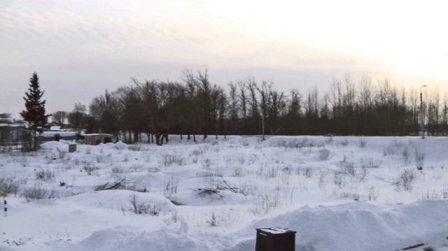
8. Used car sales outlet
An open-air used car sales outlet, surrounded by a metal fence. On the morning of the crash, fragments of the aircraft were wedged into the metal fence. One of such steel fragments flew by the head of a man standing there, almost killing him. In September 2010, the crew of the “Misja Specjalna” TV show filmed holes in the fence, left after the removal of the debris.
The sales outlet is no longer there, and the fence has since been dismantled.
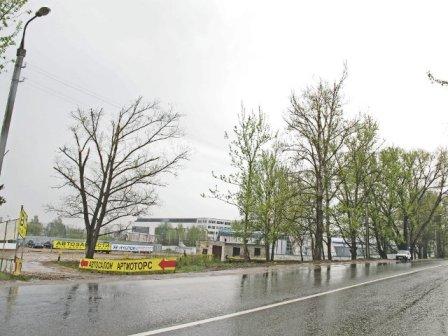
9. Position of the torn-off part of the wing
According to MAK and Miller Committee findings, the fragment was torn off the aircraft wing after it hit the birch tree. In the opinion of Professor Binienda, a US scientist, even if the “armoured” birch tree managed to tear off a part of the wing, according to the principles of aeronautics, the torn-off fragment would have landed several dozen metres closer to the tree.
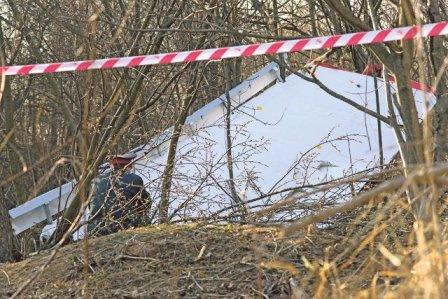
10. FMS failure point
FMS is the main flight computer. The FMS power supply was lost when the TU-154 aircraft was flying at the altitude of approx. 15 metres, 60–80 metres before the crash site. This fact, confirmed by the Polish prosecution office, was ignored by both MAK and Miller Committee.
11. Left Stabilizer
On the satellite photo made on 11 April, it is situated at the distance of at least 20 metres further away from the wreckage than on the photograph taken on 12 April. This discrepancy was discovered by Professor Kazimierz Nowaczyk. It means that a large fragment of the aircraft, weighing over 100 kg (approx. 223 lbs) was for unknown reasons moved by the Russians closer to the wreckage. Photographs of the wreckage featured in the MAK report show the wing fragment in this position.
12. The CCTV system at the KIA garage
An outdoor CCTV camera installed on the corner of the KIA garage building is supposed to monitor the KIA parking lot. The camera range, however, also covered the stretch of land where the TU-154 aircraft fell. Several weeks prior to the crash, the CCTV camera ceased to record any images.
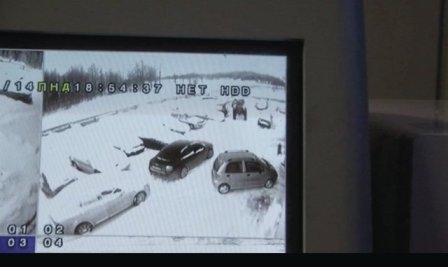
13. The position of Vladimir Safonyenko
An employee of the KIA garage. Immediately after the crash, Mr. Safonyenko rushed to the impact site. He was the person who recorded the famous footage on his mobile phone, where gunshots can be heard. The gunshots fired after the crash of our aircraft were also heard by Militia officers from the airfield security forces, who ran towards the aircraft.
14. Firefighters’ station
The first service to react and send rescue teams to extinguish the fire at the crash site. One of the firefighters reported later that the aircraft “caught fire while still in the air, after it brushed the trees.”
15. Yak-40 parking site
The Yak-40 aircraft with journalists on board landed 1 hour 20 minutes before the government aircraft. The crew was waiting by the aircraft for the arrival of the TU-154. Artur Wosztyl and Rafał Kowaleczko testified that immediately before the crash they heard aircraft engines working at full power. Next, they heard explosions, followed by the sound of dying engines. “And then all fell silent”.
16. The site where bodies were found
There were no rescue operations carried out at the crash site. Nobody knows why, since many victims laid face-down on the ground, and many bodies were preserved intact.
The remains of victims were subjected to only rudimentary examination. Polish forensic experts did not participate in post-mortems, despite the declaration made in April 2010 by the Polish Health Minister, Ewa Kopacz on the subject. After fake post-mortems, debris was sewn into the bodies. The examinations did not include lung tests or x-rays for the presence of metal fragments in the bodies. The remains were packed into plastic bags. World-renowned forensic expert, Professor Michael Baden (who participated in the autopsies of President J.F. Kennedy, Martin Luther King and Tsar Nicholas II) was not allowed to participate in the post-mortems of two exhumed crash victims, Mr. Przemysław Gosiewski and Mr. Janusz Kurtyka (Chairman of the National Remembrance Institute, IPN). Professor Baden stressed the negligent behaviour of the prosecution office after the exhumation of victims, which i.e. failed to x-ray the remains.
17. Wreckage deposition site
Immediately after the crash, the wreckage was subjected to deliberate destruction. The wreckage was compressed, torn apart, broken apart by excavators, important elements of the wreck, such as hydraulic systems or ailerons were cut into pieces with circular saw blades, and windows were crushed with wrecking bars. Next, whatever remained of the wreckage was deposited in open air, on the side tarmac of the airfield. Largest parts of the wreckage were arranged within the silhouette of the aircraft painted on the tarmac. Thousands of smaller fragments that nobody even attempted to examine were thrown in disarray in a heap, like scrap.
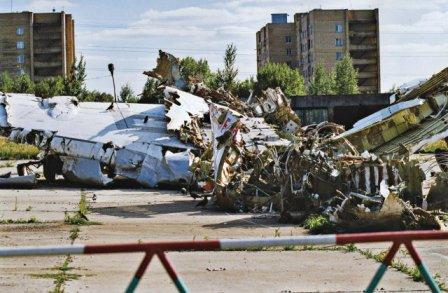
For the first six months, the wreckage remained uncovered and fully exposed to elements. Afterward it was provisionally covered with military canvas. In Western countries, parts of wreckage are sorted out, subjected to chemical tests, and then mounted on a skeleton structure of the machine to help find deformations that are unusual in case of a regular plane crash.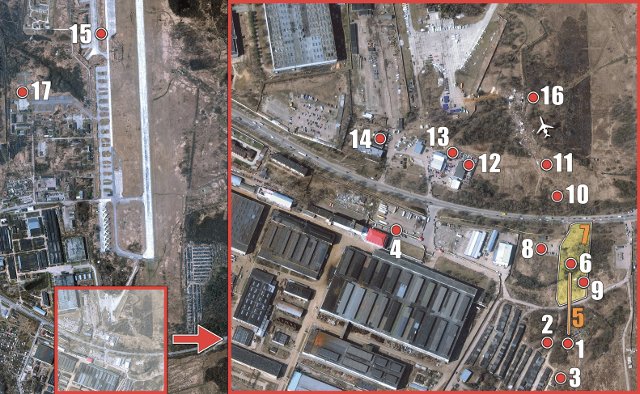
(fot. Rafał Dzięciołowski, Andrzej Hrechorowicz, Bruno Neumann, 'Misja specjalna', Wikimedia, Digital Globe)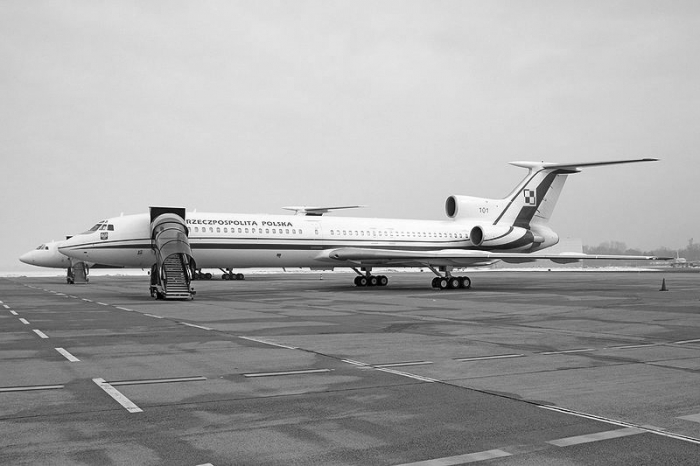
---
Translation by Iranda, no copyright infringement intended.





